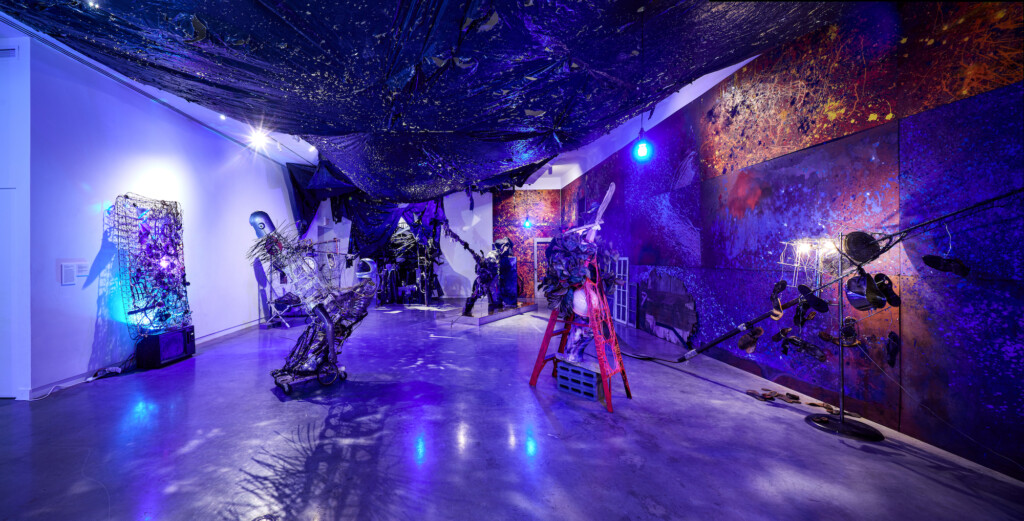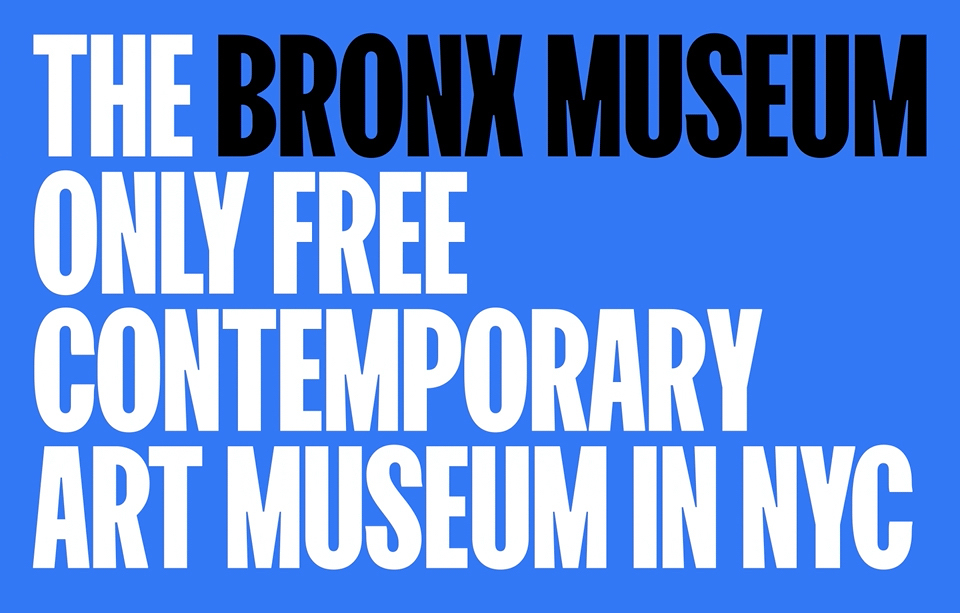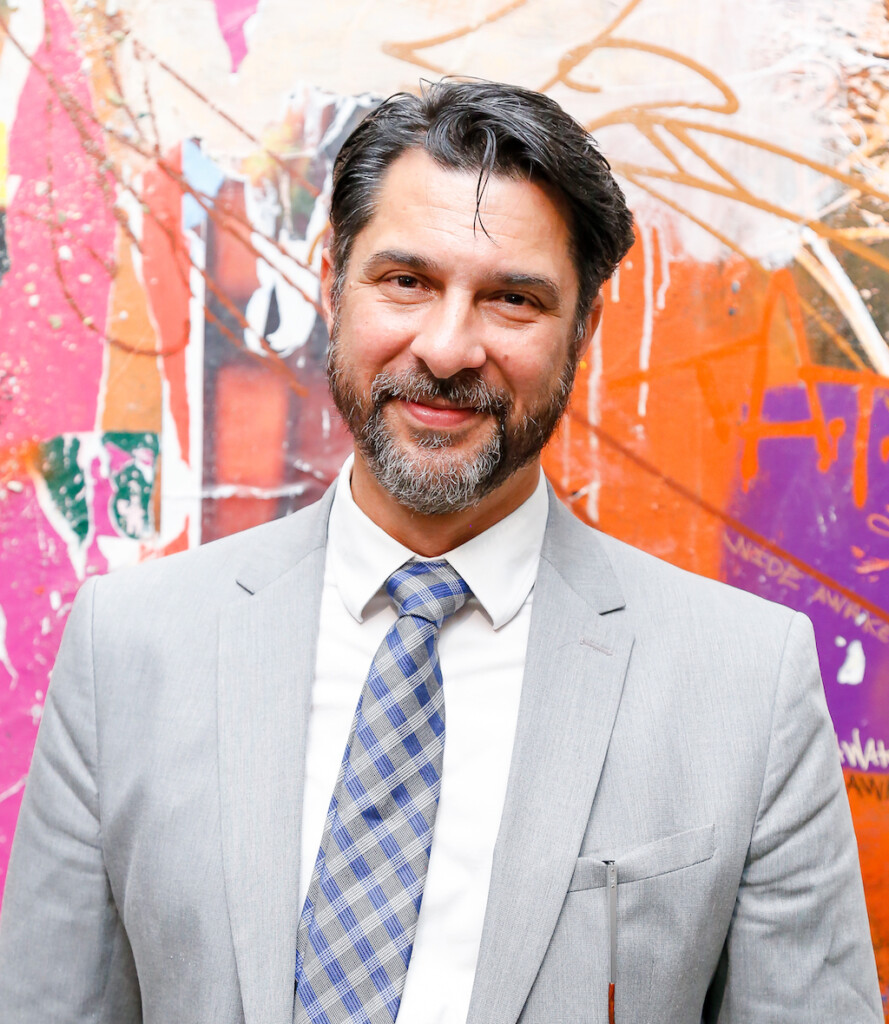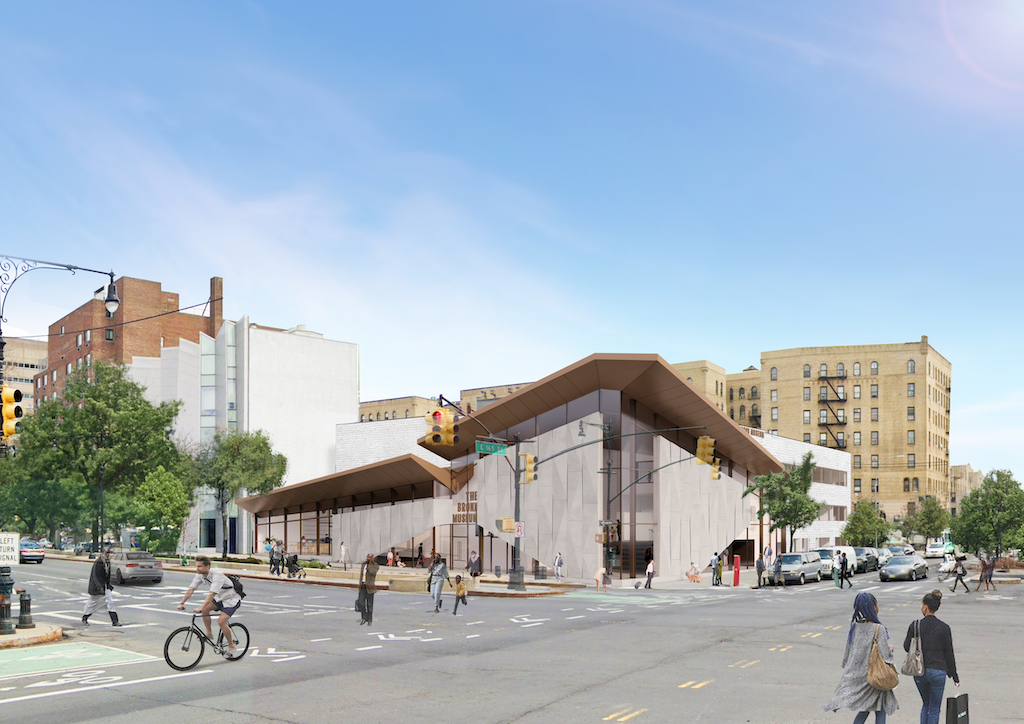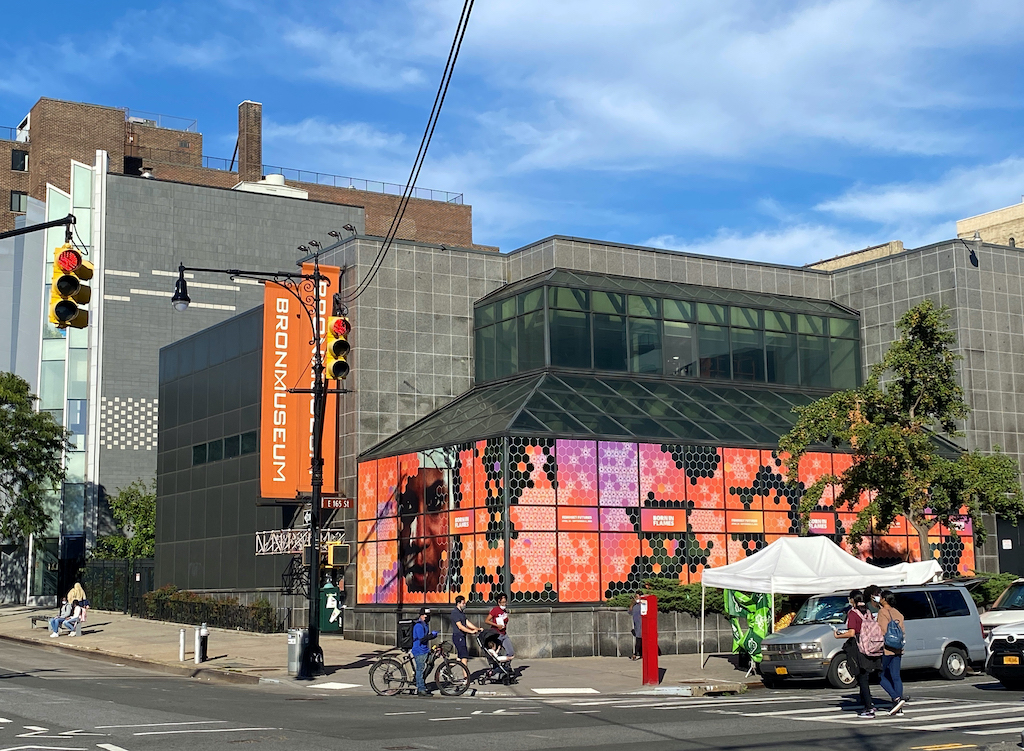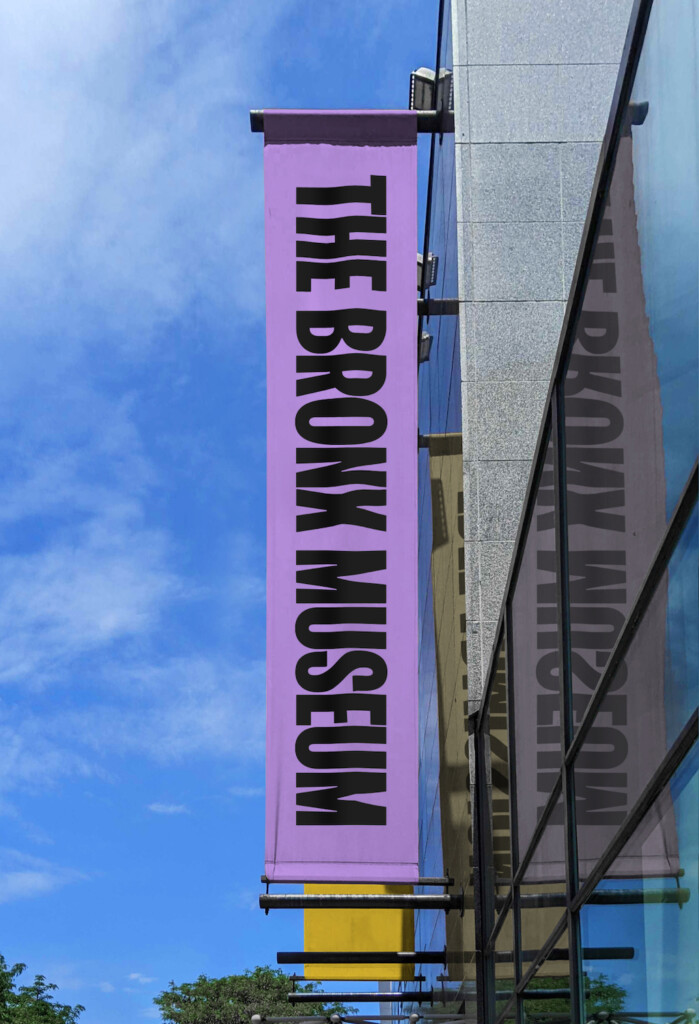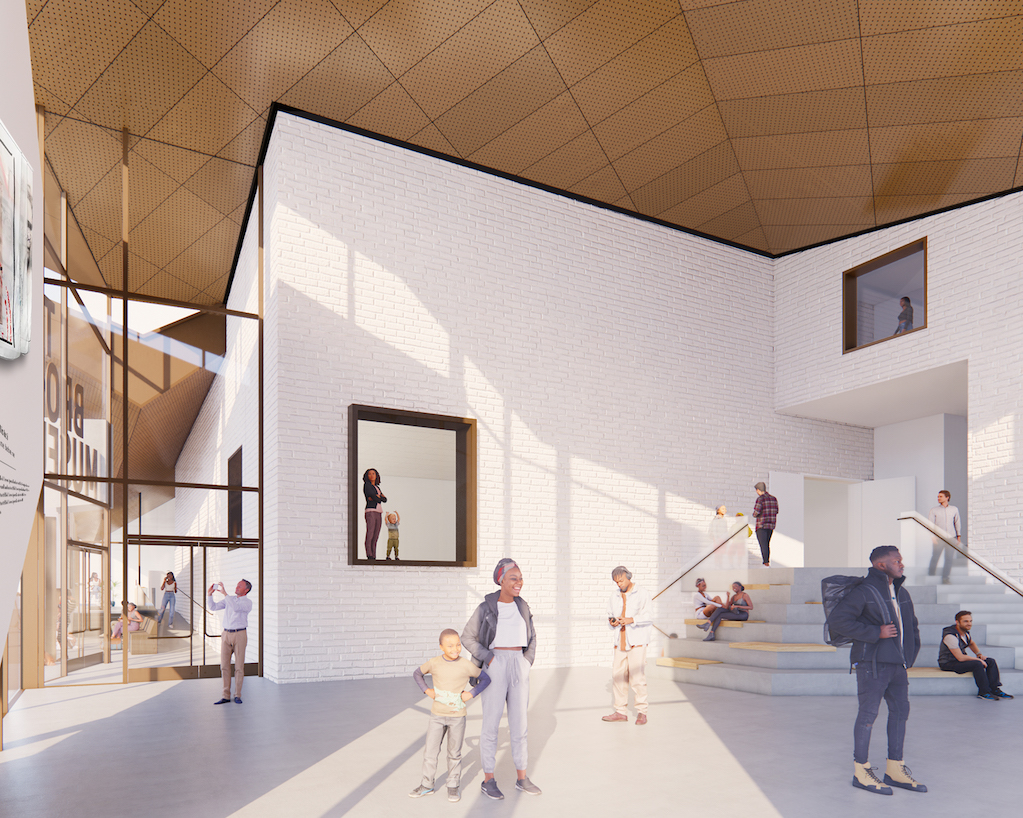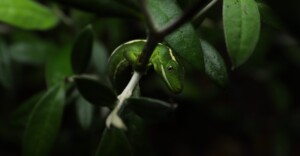The Bronx Museum of the Arts, which recently launched a new identity and website, last year unveiled the designs for a planned $26 million renovation by architecture firm Marvel. Scheduled to be completed by 2025, the restoration of the entrance and lobby marks the institution’s 50th anniversary.
Klaudio Rodriguez, executive director of the Bronx Museum of the Arts, said the renovation and rebrand will “amplify our ability to educate, engage and provide a critical gathering space for our communities”.
“Partnering with Team, we’ve developed a new identity for the Bronx Museum that gives us all the tools to strengthen our presence in the Bronx, and to highlight our incredible programming to the city at large,” Rodriguez explained.
The Bronx Museum is the only contemporary art museum in New York to offer free admission all year. It is home to a permanent collection of more than 2,000 works.
A curatorial background
Klaudio Rodriguez has been with the Bronx Museum of the Arts since 2017. He is dedicated to the museum’s long history of service to the community and BIPOC artists, and advancing the role of art and education in the Bronx and wider New York City. Since his appointment as executive director in the fall of 2021, Rodriguez has led the museum to embrace its founding principles of inspiring people and connecting communities through the power of art and education, re-dedicating the museum to sharing the rich, local culture that has influenced contemporary artists and audiences across the city and beyond.
He guides the museum’s institutional vision, $28m capital project, staff, collection of over 2,500 objects, exhibitions, research resources, educational initiatives, outreach programs, external relations, administrative management and strategic planning.
Rodriguez previously served as deputy director of the Bronx Museum of the Arts and senior curator at the Patricia & Phillip Frost Art Museum at Florida International University (FIU), in Miami. He holds a BA and MA in Art History and Latin American Studies and a Graduate Certificate in Museum studies.
He tells blooloop:
“My background is curatorial. I was a curator for many years in, in Miami. I’m a Latin Americanist; my master’s degree is in Latin American art. I came to the Bronx in 2017 as deputy director, and at the end of 2020, I was named executive director of the museum. I come from many years of curatorial work in south Florida”
The Bronx Museum of the Arts
The Bronx Museum celebrated its 50th-anniversary last year:
“We are also excited to say that we are embarking on, and are already fully funded for a capital campaign,” he adds. “We are going to be redoing the south building, the old synagogue.”
He takes a step back, filling in some of the history:
“The museum was originally housed in a courthouse down the street. It was brought in during a period of turmoil in the Bronx, in the early seventies. A series of very forward-thinking, visionary community activists thought it was important to bring culture into the borough. In the early eighties, the museum moved up the street to 165th Street on the Grand Concourse, um, into a converted synagogue. The museum was housed there for many years. In 2006, there was a new addition on the north side of the building, with our Arquitectonica-designed building.”
“Now we are about to break ground, in the next few months, on a two-year project to revitalise, recreate and redo the entire corner, entry point. There will be a new entrance to the museum, new exhibition spaces, new cafe space, and a lot more ways to engage our visitors. It will be transformational for the museum. We’ve been working on this for several years now, so we’re super excited to get the projects started. We’re fully funded and fully designed, so we’re ready to roll.”
A museum by and for the community
Turning to the museum’s place in the community and vice versa, he says:
“It’s something we try to define and redefine consistently: what community means, and how we define ourselves as a community museum, or a museum, a museum embedded in the community.
“We are a museum that was made for the people of the Bronx by the people of the Bronx. It’s important that we stay true to our roots. What does that mean? It means a variety of things. It doesn’t necessarily just mean bringing programming that the community is necessarily familiar with, but bringing new experiences and quality programming to the community; things that resonate with the community, issues and concerns the community has. All our educational public programs and exhibitions speak to that experience of the Bronx.”
“We are a contemporary art museum embedded in the Bronx, but we are much more than that. I see us as a much broader, wider-reaching organization, bringing it back to the people and the communities of the Bronx. We work with a lot of Bronx-based artists, but that is not necessarily the only thing we do. We tackle issues that are important to the community itself.
“Our educational programs are stellar. We are probably better known for that than anything else. We have provided tremendous service to the community in areas of need. I hate to say it, because it gets repeated and it’s not how I feel about it, but everybody talks about the Bronx being one of the poorest congressional districts and this tremendous amount of need and lack of service for the community.
“I hope that we’re doing our part in helping fulfil those needs.”
The power of art
However, he adds:
“It is a vibrant, dynamic borough. People forget it’s one of the largest boroughs. We have the Bronx Zoo, the Botanical Gardens and the Grand Concourse. It’s one of the most diverse boroughs in all of New York City. There are something like three and a half million people in the borough. One of the things that I’m really proud of is the work that we do, these services that we provide to the community in areas of need, exposing people to the power of the arts.”
He credits the arts with having brought him to where he is today:
“I’m a Nicaraguan immigrant. My parents left during the revolution. Art became an escape, a respite, for me. It got me from a small shared apartment in downtown Miami to a boardroom in Wall Street. I hope to telegraph the power of culture, education, and the work that we’re doing, to our visitors, to the students, to the people that come in, that participate and engage with us.
Rodriguez worked for many years at the University Museum:
“For me, the educational aspect has always been a driving force. I’m less interested in things on walls, as it were, and more interested in the impact of the stories that can be told, and the narratives that we can put forth, and how we can connect them back to these communities.”
The Bronx Museum is unique
One of the elements that make the museum unique, he contends, is its capacity to connect:
“We’re not big, but we are nimble. We are small enough to be able to react and adjust and address needs on the fly. It allows, us, also, to be creative in the work that we do. We’re able to think outside the box sometimes. And the fun part of this exercise is that we can always take a different direction as we move. There are very few places I’d rather be for that reason.”
He adds:
“One of the things that attracted me to the museum initially was the feeling that we could make a real impact. You walk into a gallery, a classroom, a space, and you see it happening: we’re able to engage very directly.”

He explains what this means in terms of the collection, and the interpretation of that collection:
“Our collection is largely underrepresented BIPOC and LGBTQ+ artists. We try to build a collection that really reflects the communities that we serve. We work with artists that we feel are long overdue for recognition. Right now, for example, we’re working with John Ahearn and Rigoberto Torres. We build our collections in the same way. I hope with this new capital project we’ll be able to show it more.
“We have a stellar collection, but it’s largely unseen. We haven’t really had a dedicated space, and I’m hoping to change that in the next few years.”
Reflecting the museum’s values

Rodriguez feels it is important that the capital project should reflect the museum’s values.
“It isn’t a new entry point. For me, it is a new way to engage the community in a very close, meaningful way.”
He elaborates on the transparency that exists between the street and the inside of the museum:
“You don’t walk through a traditional ticketing process, because we are free and open to the public. Once you step into the building, the lobby is basically a project space. So, you’re immersed in art and you’re immersed in an experience immediately.
“It can sometimes be intimidating to walk into museums. There’s a barrier to entry if you feel you might not belong, and you have to approach the front desk. We want to blur that out, destroy it, and make the museum a place where people can feel comfortable. Again, that’s all part of representation. It leads into everything. There is a dynamic that works together well, whether it’s our programs, a collection, or the artists that we work with: nothing is intimidating.
“I had this conversation with a colleague of mine who leads a much larger institution. They did a long visitor survey on the heels of the pandemic, and the takeaway – it sounds simple in some ways – was that people said that they wanted to have fun. It’s a much more traditional kind of institution, where things are on walls. It’s a much more one-way dialogue than this.”
Introducing an element of fun
By contrast:
“I come from a background where I want to create experiences that are immersive, that are engaging, that are interactive; where you are part of what’s happening; you feel like you belong in this space, that you’re walking away with something, and, frankly, that there’s an element of fun.”
He qualifies this:
“There will be exhibitions that are dense and that are tackling very serious issues. But they’re presented in a way where you feel like you’re not being talked down to; that you’re a part of this larger conversation; that you are an active participant in what’s happening. It is really important for us to engage in that way.”
“I always lead with that with my curators: ‘Let’s have a little fun with this, in the way that we present it, or the way that we think about it.’
“When I was curating, I always called it ‘layer-caking’: creating these multiple points of entry so you can speak at every level and engage everyone at every level, and not intimidate people. Everything that we’re trying to do is being led by that: the museum, the artists, the educational programs, the public programs, the new facility, even the website, so that you are engaged, and led to be an active participant.”
An exciting time for the Bronx Museum
It is, he says, an exciting time for the museum:
“We’ve come out of a really difficult period after the pandemic. We’re still in the process of getting our numbers back up, and reengaging. New York took a hit, and it took some time for us to really crank up again. We are one of the outer boroughs; people have to hop on a train to get to our location. It took a little before people were comfortable to jump in subways and come to see us. But I think we were as active as ever during the pandemic.”
“Our educational programs all kicked online. We quickly shifted to a ton of programming and served as many, if not more, students during that period, shifting a lot of resources into our virtual offerings.
“I’m proud to say that we kept our entire staff as well, which is really important.”
Digital strategy expands during COVID
He adds:
“We worked hard – I don’t think we’ve ever worked as hard, actually – from home. It was a trying time. But I’m proud of the staff and my board and everybody else. We not only survived, but I think we thrived. All these things came out of the pandemic; the capital project, new websites, new branding, new marketing, new exhibitions, and new staffing. We grew our staff, and came out on the other side healthy.”
The digital strategy has continued to grow and evolve since the pandemic as a strategy to reach new audiences:
“We’ve worked at it. We had a very antiquated website that I had inherited that had been there since around 2010. In internet years it was about a hundred. Last October, we unveiled our new website, which is crucial to the type of work we want to do. It allows us to really create a lot more interactive content. We are looking to put our collection up online. We have an interesting archive that we want to put online, as well, for research.”
Reaching the community
There is, he concedes, much about the live, in-person experience that is difficult to replicate online. However:
“I’ll give an example of a program that was highly successful, and that we have continued. I really enjoyed seeing how this played out. We have family community events at the museum that happen bimonthly: activities where we engage with several hundred people. It’s great, and, clearly, it’s the sort of one-on-one experience that is hard to replicate. But one of the things that we did during the pandemic served two functions. We were fortunate enough to have a donor who provided us with a lot of art supplies and materials. For instance, watercolours, sketch pads, pens, pencils, and rulers.”
“We would have pickup days, where we would line hundreds of these bags in front of the museum, for families to come and pick up supplies. Then, our educators would moderate a family event online. The kids got to do the activities, but it was all online.
“Our reach was broader, but the nice thing for me was, again, talking about a community with people that have needs where every little bit helps, is that these kids didn’t just come into the museum, participate in an activity, and then go home. They actually got to take something home with them. They got to keep these materials, and we would send constant practice exercises, so they could continue beyond the couple of hours that that program existed. That was crucial.”
Adult education at the Bronx Museum
This program has continued:
“Even though we do our in-person events, we still have material pick-ups, and we still provide this digital interaction.
“We are also looking at different ways to engage with our exhibitions, as we are starting to ramp up again: everything is on the table. We’ve been fortunate enough to get some support for certain programs and we recently acquired a grant to allow us to engage with senior citizens in the community. This is an area of need that we hadn’t previously addressed, but we will be kicking that program off this summer.”

This is something he has wanted to do for a while:
“We just didn’t have the capacity or the capital to do so before. When I first started, our outreach programming was largely around the K-12 crowd. In fact, it was probably even narrower than that. It was important for me to expand and broaden our reach into adult and senior programming. So, that’s something I’m really excited about.”
Reimagining the space
Additionally, Rodriguez says:
“Once the capital project is over, we have some spaces down in the lower level of the museum. I want to rehouse those spaces with artists in residencies, once we reopen.
“We will create an interactive, dynamic interplay where the artists will work with our teams, and our team programs will work with our community, and with our visitors, in a dynamic that sort of feeds itself. There will be a maker space where the artists in these residencies will be interacting with, for example, our teams and our team program, or our seniors and our senior programs, so there will be a sort of synergy emerging where everything is interconnected.”
The plan is to break down the barriers between programming, curatorial and education, and to engender a cohesive way of working:
“I come from curatorial,” he explains. “I was used to sitting up here at one level as the curator, leading, while everybody else follows. Now, my education department and my curatorial department work hand-in-hand to develop the exhibition, and the programs; working with our public programs, working with the artist residency. There is so much more synergy to what we’re doing. Again, we are small enough to be able to do something like that, which is really exciting.”
The future is bright for the Bronx Museum
Rodriguez has, he concedes, high aspirations:
“I want to break the model a little bit.
We still have a lot of work to do, but I have a really energised, energetic team. We’ve had a series of retreats where we sit down and really talk about these things, what they mean to all of us, and how we want to approach them. Because we are small, because I operate in a way where everybody’s voice has equal weight, it sparks interesting conversations. That helps me think in very different ways. We have a diverse staff with a variety of perspectives and experiences. Then we start to coalesce all those things, and to say, ‘Let’s try this, and see how this works.’
“By and large, we’ve been successful. Sometimes we miss, but mostly, we’ve nailed it.”
In short, he adds:
“I really want to get the word out about the great work that my staff is doing. They have done a lot of work in very difficult times. They have bought into what I’m trying to accomplish at the museum, and in the community.
“We’re excited now. We just need a little more resources, and a little more time, and we’ll get there. Fundraising for the programming I want to do is always a challenge; we need to fight for every dollar. We’re in one of the outer boroughs, so we’re competing against these large institutions, but I’m still hustling.
“The sky’s the limit.”
Abigail DeVille: Bronx Heavens is on view until 18 June 2023. Swagger and Tenderness: The South Bronx Portraits by John Ahearn & Rigoberto Torres runs until 30 April 2023.
Top image: Abigail DeVille: Bronx Heavens, Argenis Apolinario, courtesy of The Bronx Museum
